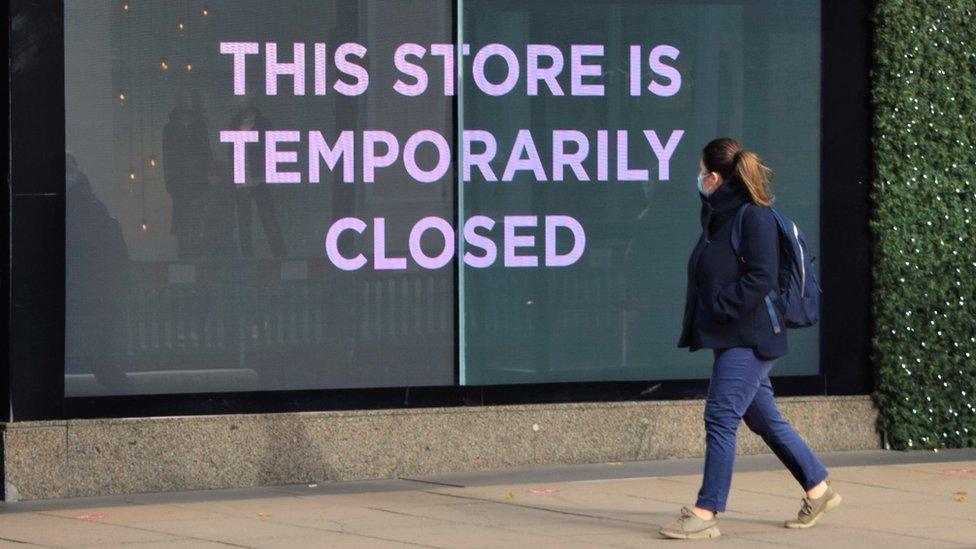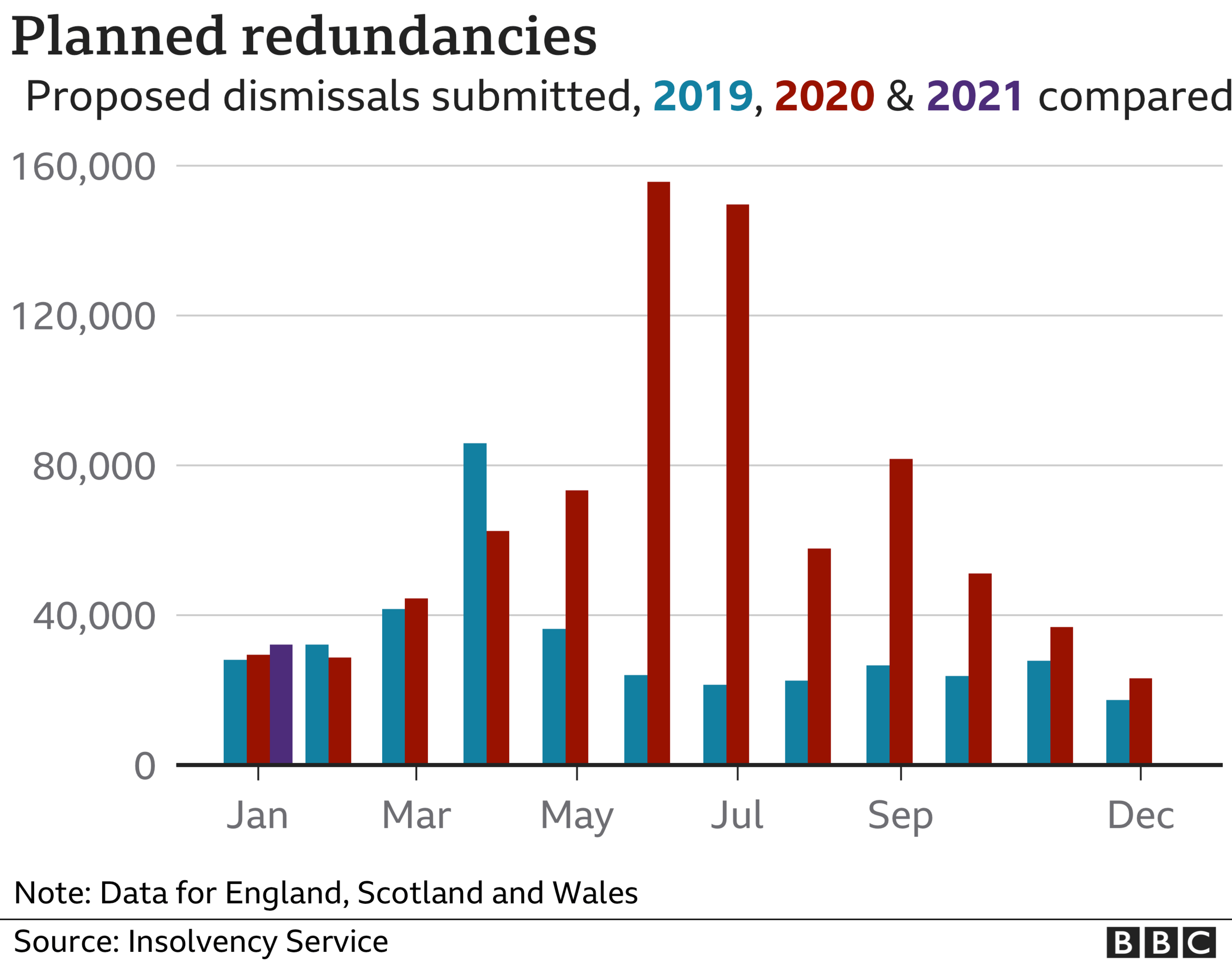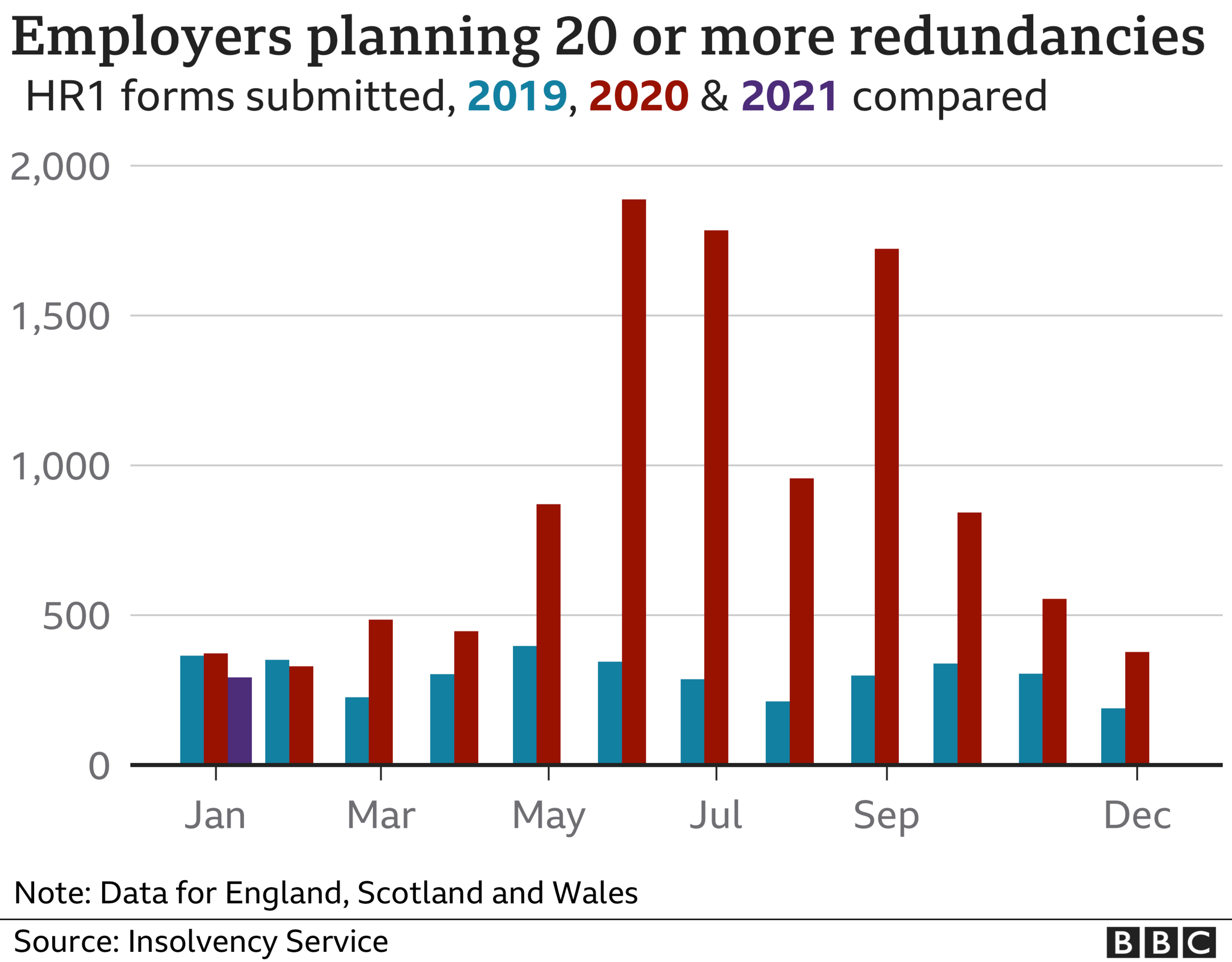Covid-19: Fewest firms planning job cuts since pandemic began
- Published

Some 292 British employers made plans to cut jobs in January, the lowest figure since the pandemic began.
A total of 32,000 redundancies were proposed, up 9% on last January, despite new lockdown rules closing businesses across most of the UK.
The figures suggest that the decision to extend the furlough scheme has helped to prevent wider job losses.
The numbers were released by the Insolvency Service in response to a BBC Freedom of Information request.
Employers planning 20 or more redundancies are obliged to notify the Insolvency Service at the start of the process by filing a form called an HR1 Advance Notice of Redundancy.
This gives an early indication of the state of the labour market ahead of the redundancy statistics published by the Office for National Statistics (ONS), which can be several months behind.
The numbers for January showed that, in total, 32,000 jobs were described as at risk in those plans. It is the lowest figure since the start of the pandemic, excluding December, which usually sees less activity because of the Christmas holidays.

This was despite lockdowns across almost all of the UK, which closed schools and many businesses including restaurants, bars and retailers deemed "non-essential".
"This seems to suggest that the extension of the furlough scheme from 31 October to 30 April has been effective in preventing another surge in job losses," said Ruth Gregory, senior UK economist at Capital Economics.
The lockdown last spring led to the largest increase in redundancies on record, with about 150,000 jobs at risk of redundancy in June and July.
The latest data from the ONS showed a record 395,000 redundancies in the period from September to November.
But these figures appear with a time lag, as they are based on a survey asking people if they have been made redundant in the previous three months - so some of those jobs will have been lost as far back as July.
ONS weekly estimates suggest redundancies peaked in September, and have since started to come down.

As Insolvency Service figures only cover firms making 20 or more job cuts, the total number of redundancies made is usually larger.
However, individual employers often make fewer jobs redundant than the number they initially notify.
Firms in Northern Ireland notify the Northern Ireland Statistics and Research Agency, and are not included in the Insolvency Service figures.
- Published26 March

- Published16 July 2020
